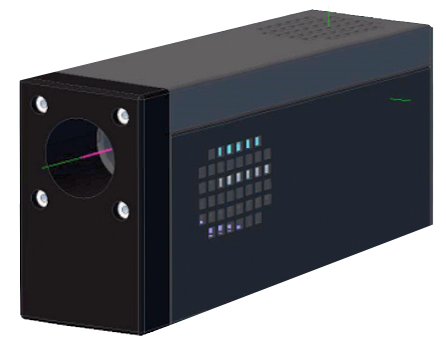New Product
IPSSL Laser Platform*
An Atomic Resonant Wavelength Laser with Embedded Atomic Standard for Ultra-Stability and AccuracyAtomic Wavelength Reference Modules (AWRM)

Model Number 100
*Patent Pending
Features (preliminary)
-
Wavelength Stability:
0.5 pm over 12 hours -
Wavelength Accuracy:
±1 pm -
Optical Power:
50-500 mW (varies with model) -
Available Wavelengths:
List is below -
Compact:
2" x 3" x 6"Please click here to download our IPSSL preliminary data sheet.
IPSSL Platform Models
The first product to be launched is IPSSL-Ne (640.22nm). Other devices currently under consideration for manufacture are given in the table below.
IPSSL Platform Models |
|
IPSSL Devices |
Wavelength |
IPSSL-Hg |
IPSSL-He |
IPSSL-Ca |
422.673 nm, 657.278 nm |
IPSSL-Sr |
460.733 nm |
IPSSL-Ne |
633.443 nm, 640.225 nm |
IPSSL-Li |
670.776 nm, 670.791 nm
|
IPSSL-Ar |
706.722 nm, 714.704 nm |
IPSSL-Rb |
780.027 nm, 794.760 nm |
IPSSL-Kr |
785.423 nm, 810.437 nm |
IPSSL-Xe |
823.163 nm |
IPSSLXe |
881.941 nm |
IPSSL-He |
1083.034 nm |
IPSSL/As an Optical Pump
IPSSL technology addresses needs in industrial markets for light sources. One major application is optical pumps. By matching the embedded atomic resonant standard of the IPSSL to the atomic resonance of the absorbing pump medium, high conversion of optical pump energy can be achieved. An example is the use of IPSSL-Rb to pump the rubidium D2 transition of a DPAL laser.
IPSSL/Advantages for Instrumentation/Raman Spectroscopy
Another major application is chemical analytical instrumentation requiring high wavelength accuracy and stability. Multivariate chemometric tools require accuracy at 0.005 nm. As Raman spectrometers, for example, rely on conventional semiconductor lasers, wavelength accuracy is no better than about 0.5 nm. In addition, systematic errors are also introduced by the transfer function of the spectrograph, including the grating, CCD structure, and opto-mechanical and opto-thermal properties. Although these systematic errors are correctable, calibration of the spectrograph alone is not sufficient without a stable laser. These circumstances generally demand frequent and periodic wavelength calibration. When integrated into such instrumentation, IPSSL provides an invariant wavelength reference point. This eliminates an important variable in the chemometric algorithm with positive implications for system simplification and operating cost reduction. For instrument manufacturers, reproducibility from instrument to instrument is assured, and the simplicity of the design integration can eliminate moving parts.
In the future, more advanced multi-wavelength IPSSL technology will provide a Fellgett advantage for shifted excitation Raman difference spectroscopy (SERDS).
Scientific Markets
IPSSL technology is also attractive for scientific markets. Examples include Bose Einstein condensates (“atomtronics”), advanced cleaning processes for semiconductor wafers and photolithographic masks, and optical magnetization of Xe and He for MRI lung diagnostics. IPSSL technology also offers advantages for LIDAR and atomic clocks.
